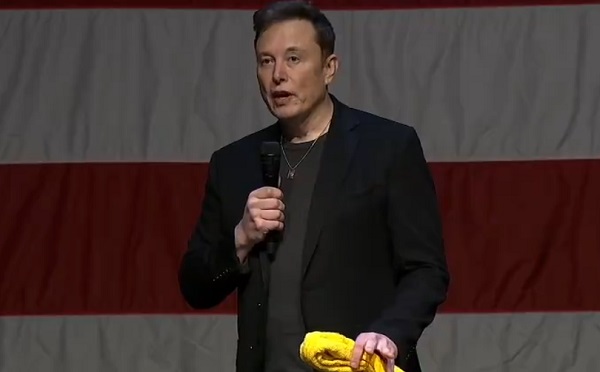Opinion
5 year study by NAIT shows angle of panel is more significant than snowfall in Northern Alberta

Study looks at impact of snow and angle of solar panels Old Man Winter takes a lot of flak in Alberta for everything from costly heating bills to frozen car batteries. But when it comes to the impact on solar panels, winter gets an unjustified bad rap.
A five-year study led by NAIT’s Alternative Energy Technology program found that snowfall on photovoltaic solar panels results in about a 3% energy loss. That’s significantly less than the 20% drain that industry had traditionally estimated despite a lack of data.
Tim Matthews, a technologist and one of the leads on the study, says the results will improve modelling used to estimate solar energy production that determines return on investment. Ultimately, that means a win for consumers.
NAIT launched the reference array snow study in 2012 with the City of Edmonton and Solar Energy Society of
Alberta. A system of 12 solar modules was installed atop the Shaw Theatre on Main Campus to not only measure the impact of snow on the system, but also how the tilt of each module affects energy production.
“The rule of thumb throughout industry was to design a system as if it had no snow and then wipe 20% of energy production off the slate – we’re going to lose 20% because we’re in Canada,” says Matthews. “Everybody was terrified of underestimating the impact of snow and latitude [on energy production].”
They found that the angle of the solar panels has a far greater impact on energy production than snowfall. Solar modules were fixed at six different angles – 14, 18, 27, 45, 53 and 90 degrees – which represent roof pitches commonly found on commercial buildings and homes. Six modules were cleared of snow every day, while the remaining six served as a control.
The least efficient was the module set at 90 degrees, like a wall-mount system, which saw a 24% loss in performance. The
module tilted to 53 degrees was most efficient, which confirmed an industry standard that solar systems are optimized when tilted to the equivalent of a city’s latitude.
The ideal angle for maximum production with snow accumulation was 45 degrees.
Matthews cautions that even five years worth of data is a small window when dealing with fluctuating variables such as
weather. But for a homeowner or business who already has historic data on their energy consumption, the tilt and snow impact clear up what had been a cloudy picture in predicting the cost-benefit of solar.
“Having this information raises the level of precision when it comes to engineering, design and production modelling,” says
Matthews. “A company that’s doing solar installation and design can go to a client and say, ‘This is precise. You can take this to the bank.’”
Crunching five years of data The work of crunching through all the data fell to students (and now grads of the class of ’18) Christian Brown and Jackson Belley as the basis of their final course project, or capstone.
That’s no mean feat considering energy performance data was collected from all 12 solar modules every five minutes every
day for five years – enough to fill 6,000 spreadsheet files.
“It was an insane amount of data,” says Brown. “That was not quite half, maybe the first third of the project. Months of work. It was a lot of learning.”
After five years of getting up at all hours to clear snow from the reference array – including Christmas – Matthews is glad
to be rid of that daily chore. For anyone who operates a solar system, he cautions that snow should only be cleared if it’s
safe to do so, such as on a flat commercial roof.
“Should you clean the ones on your [pitched] roof? Heck no,” he says. Nor does he recommend asking a contractor to
remove it. It’s just not worth it for the minimal gain in power efficiency from a snow-free solar system.
“Our recommendation is that it makes no sense. One hour of time from a professional or an apprentice is just not worth
it.”
Data was gradually exported by day, month, season and year, making it more digestible and user-friendly for industry,
government and institutions, but also the schools and not-for-profits, who are interested in the information.
The study’s interim findings are available online, while the students’ final report with datasets will be published on the
Alternative Energy Technology program page this fall. It’s expected to be a hot commodity. (Anyone can request the data now).
“The amount of requests that we get [for the data], it’s obvious people are interested and they want to know how does snow
affect solar modules,” says Belley.
Brown adds it’s a pretty cool feeling to work on a class assignment that has a major real-world impact. “The idea of solar won’t be as much of a gamble any more.”
Plans are also in the works to submit the findings for peer review and publication in a scientific journal.
After reading this report and remembering that both the Province of Alberta and the City of Red Deer are looking into a program that would pay for the program and be billed via your property taxes over 10 years.
The province and the city were very much forward thinking, I would offer and if snow loses only 3 % of power it does make more sense. Right?
Censorship Industrial Complex
Legacy Media Outlets Buried Research Showing DEI Makes People More Likely To Agree With Hitler

 From the Daily Caller News Foundation
From the Daily Caller News Foundation
Two legacy media outlets refused to publish stories covering a study that said diversity, equity and inclusion (DEI) education “increased hostility” and made people more likely to agree with the modified statements of Adolf Hitler.
The Network Contagion Research Institute (NCRI) claimed The New York Times and Bloomberg informed them that they would not publish stories concerning their study, citing editorial concerns, according to communications obtained by the National Review. The study, titled “Instructing Animosity: How DEI Pedagogy Produces the Hostile Attribution Bias,” found that people who read material espousing left-wing ideas on race and identity often amplified “perceptions of prejudicial hostility where none was present, and punitive responses to the imaginary prejudice.”
“Unfortunately, both publications jumped on the story enthusiastically only for it to be inexplicably pulled at the highest editorial levels,” a NCRI researcher told National Review. “This has never happened to the NCRI in its 5-year history.”
A New York Times reporter told the NCRI that they would reconsider publishing the article on the study if the paper went under peer review, according to National Review.
“The piece was reported and ready for publication, but at the eleventh hour, the New York Times insisted the research undergo peer review after discussions with editorial staff — an unprecedented demand for our work,” a NCRI researcher told National Review. “The journalist involved had previously covered far more sensitive NCRI findings, such as our QAnon and January 6th studies, without any such request.”
The New York Times denied having an article ready to publish in a statement to the Daily Caller News Foundation.
“Our journalists are always considering potential topics for news coverage, evaluating them for newsworthiness, and often choose not to pursue further reporting for a variety of reasons,” a Times spokesperson told the DCNF. “Speculative claims from outside parties about The Times’s editorial process are just that. It’s not true that The Times had prepared a story ‘ready for publication’ on this topic.”
The two Bloomberg reporters had a piece ready to publish, but Nabila Ahmed, the team leader for Global Equality at Bloomberg News, informed the NCRI that they wouldn’t publish the article, saying it was an “editorial decision.” Ahmed’s responsibilities are to “elevate issues of race, gender, diversity and fairness within companies, governments and societies that Bloomberg News covers,” according to her LinkedIn.
The reporters previously communicated to the NCRI that the research would create “an important story” and they would’ve been “eager” to publish on it, according to National Review.
In the experiment, researchers took 850 participants and gave one group a neutral essay on the caste system in India, and gave the other caste-sensitivity-training material from Equality Labs, a left-wing human rights organization, according to the study.
When participants who read the DEI-inspired material viewed modified past statements from Hitler which replaced the word “Jew” with “Brahmin,” the upper class in the caste system, they were more likely to agree that Brahmins were “‘parasites’ (+35.4%), ‘viruses’ (+33.8%), and ‘the devil personified’ (+27.1%),” according to the study.
The DEI-charged material seemed to “engender a hostile attribution bias and heighten racial suspicion, prejudicial attitudes, authoritarian policing, and support for punitive behaviors in the absence of evidence for a transgression deserving punishment,” according to the study.
The NCRI and Bloomberg did not immediately respond to the DCNF’s request for comment.
Business
BREAKING ALERT: Trump Threatens 25% Tariff on All Goods From Canada and Mexico, Cites Flood of Fentanyl and Illegal Migrants

In a stunning announcement Monday, President-Elect Donald Trump vowed swift action to combat what he described as a surge in fentanyl trafficking and illegal migration at the U.S. borders with Mexico and Canada.
Trump pledged to impose a 25% tariff on all imports from both countries, citing their alleged failure to address the crises. He announced the policy would be enacted through an Executive Order on January 20, the day he officially takes office.
“Thousands of people are pouring through Mexico and Canada, bringing Crime and Drugs at levels never seen before,” Trump said in a statement. He singled out an incoming “unstoppable” caravan from Mexico as emblematic of what he described as the failures of both neighboring countries to address the crisis.
“This Tariff will remain in effect until such time as Drugs, in particular Fentanyl, and all Illegal Aliens stop this Invasion of our Country!” Trump posted on his Truth Social platform.
The backdrop to Trump’s shocking policy against Canada—long perceived as a strong ally of the U.S.—includes a recent high-profile case against TD Bank in the United States, resulting in a multi-billion-dollar fine. Months prior to Trump’s announcement, David Asher, a former Trump administration official and consultant on DEA investigations related to the TD probe, told The Bureau that U.S. investigators believe the “command and control” for the fentanyl money-laundering networks allegedly cited in the TD case leads directly to Toronto and Vancouver.
These networks—according to Asher—involve transnational Triads laundering cash from fentanyl distributed in America by Mexican cartels, who source their precursors from China.
In an exclusive interview with The Bureau, Asher criticized the Canadian government for inadequate cooperation in broader fentanyl-trafficking and Triad money laundering investigations, pointing to gang leaders in Canada with alleged ties to Beijing. Asher suggested that possible political and financial influences are hampering effective law enforcement in Canada.
“The key thing is the Canadian connection, and in almost all the investigations as far as money laundering, we saw the command control seemed to go back to our network analysis. When we seized their phones, we’d see Canada light up like a Christmas tree, especially Toronto, and also British Columbia,” Asher said.
Regarding allegations that Triads in Toronto and Vancouver are running fentanyl money-laundering networks for Mexican cartels, Asher added: “The question is, what does the Canadian government know, and why haven’t they tried to judicially prosecute?”
Asher emphasized that the failure to disrupt these networks is contributing to the ongoing fentanyl crisis, which claims tens of thousands of lives annually in the U.S. and Canada.
Furthermore, Asher disclosed that U.S. Congressional investigators allege the People’s Republic of China is not only incentivizing fentanyl precursor exports but also methamphetamine sales.
The tariff, Trump emphasized, will remain until Mexico and Canada take what he called their “absolute right and power” to stop the flow of illegal drugs and migrants.
“We hereby demand that they use this power, and until such time that they do, it is time for them to pay a very big price,” Trump declared.
The announcement has already sparked sharp reactions from political leaders and trade experts. Critics warn that such sweeping tariffs could disrupt North American trade agreements and exacerbate economic tensions with key allies.
This is a developing story. Stay tuned to The Bureau for updates.
The Bureau is a reader-supported publication. To receive new posts and support my work, consider becoming a free or paid subscriber.
-

 ESG2 days ago
ESG2 days agoCan’t afford Rent? Groceries for your kids? Trudeau says suck it up and pay the tax!
-

 International2 days ago
International2 days agoElon Musk praises families on X: ‘We should teach fear of childlessness,’ not pregnancy
-

 Business2 days ago
Business2 days agoCarbon tax bureaucracy costs taxpayers $800 million
-

 Addictions2 days ago
Addictions2 days agoBC Addictions Expert Questions Ties Between Safer Supply Advocates and For-Profit Companies
-

 John Stossel2 days ago
John Stossel2 days agoGreen Energy Needs Minerals, Yet America Blocks New Mines
-

 MAiD2 days ago
MAiD2 days agoOver 40% of people euthanized in Ontario lived in poorest parts of the province: government data
-

 Alberta2 days ago
Alberta2 days agoREPORT: Alberta municipalities hit with $37 million carbon tax tab in 2023
-

 Business2 days ago
Business2 days agoA Rush to the Exits: It’s Not Just Immigration, Canada Has an Emigration Crisis






